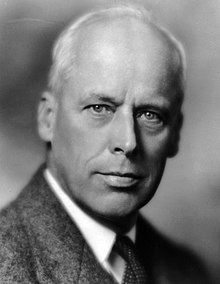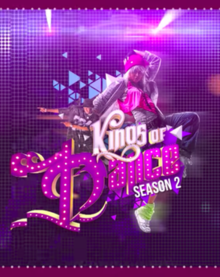오리온이카루스286
Orion-Ikarus 286| 오리온-이카루스 3세 286년 | |
|---|---|
| 개요 | |
| 제조사 | 이카루스 온타리오 버스 인더스트리 |
| 생산 | 1985-1989 |
| 조립 | 헝가리 부다페스트(미완성 조개) 온타리오주 미시사우가(마무리) |
| 차체 및 섀시 | |
| 클래스 | 트랜짓 버스 |
| 보디 스타일 | 관절이 있는 |
| 배치 | 중간 장착 엔진/"풀러" |
| 관련 | 크라운이카루스286 |
| 파워트레인 | |
| 엔진 | 커민스 NHHTC-300[1] |
| 전송 | 4단 앨리슨 HT747 또는 HTB748[1] |
| 추진 | 디젤 |
| 치수 | |
| 길이 | 범퍼[1] 위로 59피트 7인치(18,160 mm) |
| 폭 | 102인치(2,600 mm)[1] |
| 높이 | 124인치(3,100 mm)[1] |
| 연석 중량 | 37,979 lb(17,227 kg)[1] |
| 연대기 | |
| 후계자 | 이카루스 USA/NABI 436 |
흔히 오리온 III로 알려진 오리온-이카루스 286은 온타리오 버스 인더스트리즈(OBI)에 의해 캐나다 교통 사업자에게 판매된 연결식 버스였다. 1985년부터 1989년까지 이카루스 보디와 코치 워크스, OBI의 합작으로 제작되었으며, 주로 오타와(OC Transpo)와 토론토(TTC)에 배치되었다. 오리온 3호는 부식 때문에 조기 퇴역했으며, 2003년까지 모든 예시들이 퇴역했다.
생산 및 설계
롤링 이카루스 280 포탄(프레임과 차체)은 헝가리의 이카루스(Ikarus)가 캐나다 표준 환승 버스 치수에 맞게 개조하여 제작한 후 몬트리올을 거쳐 온타리오주 미사우가에 있는 OBI 공장으로 운송되어 최종 조립(국내 파워트레인, 도어, 창문, 좌석 설치 포함)이 수행되었다.[2] 오리온 3호는 1985년부터 1989년까지 건설되었다.[3] 현지 의회는 또한 유사한 크라운-이카루스 286을 위해 미국을 위해 사용되었고, 로스엔젤레스에 있는 크라운코치에 의해 완성되어 미국 환승 시장을 위해 판매되었다.
이 버스는 엔진이 중간 차축을 구동하는 "풀러" 디자인을 사용했다.[3] 세 개의 차축은 모두 록웰 인터내셔널에서 제작했으며, 무동력 전면과 후면 차축은 모델 FL-941이었고, 동력식 중간 차축은 모델 59742W로 표준 4.56:1 구동비를 갖추고 있었다.[1]
1984년에 한 대의 시승차량이 조립되었다. 이후 1985년 6월 트랜짓 윈저에 의해 임대되어 디트로이트를 경유했다.윈저터널은 세인트루이스에 매각되었다. 1988년 캐서린 트랜짓. 결국 1984년 데모 모델은 OC 트랜스포(온타리오주 오타와 서비스)에 부품으로 판매되었다.
배치
첫 번째 생산 계약은 1984년 11월에 OC Transpo에 의해 OBI에게 수여되었다. 1986년 10월 토론토 교통위원회(TTC)의 버스 90대 주문에 이어 TTC 계약 비용은 2900만 달러였다.[4] TTC에 납품된 오리온 3호는 61석, 107명의 선수 크러쉬 능력을 갖추고 있었다.[5] TTC용 오리온 III 버스는 1987년에 인수 검사를 위해 처음 9대가 납품되었으며, 1988년 초에 수입 서비스가 시작될 것으로 예상된다.[6]
서비스 중 오리온 3호는 부식이 조기에 발생하여 1995년부터 퇴역하였다.[7][8][9] 2003년까지 OC Transpo와 TTC 모두 오리온 III 함대를 완전히 퇴각시켰다.[3][10][11][12]
연산자
4개의 운송회사가 오리온 III를 사용했지만 3개만이 정식명단에 등록했다.
- 온타리오주 오타와시의 OC 트랜스포는 1985년부터 2003년까지 189대의 버스를 운행했으며,[3][10] 1990년대 후반에는 전 TTC 오리온 III 버스 25대와 세인트에서 전 데모를 인수했다. 캐더린(부품용)
- 토론토 온타리오 주 토론토 교통 위원회는 1987년 말부터 2003년까지[2] 90대의 버스를 운행했다(1997년부터 1998년까지 은퇴가 시작됨). 일부는 OC 트랜스포에[3] 팔렸다.
- 세인트캐서린 트랜짓사는 1988년부터 1990년대 초까지 전 데모(1984) 오리온 3세를 운영했다.
경쟁업체
참조
- ^ a b c d e f g "60' Orion-Ikarus Articulated Transit Bus" (PDF). barp.ca. Ontario Bus Industries / Bus Industries of America. Retrieved 15 March 2019.
- ^ a b "Articulated buses returning to fleet in 2013" (Press release). Toronto Transit Commission. October 11, 2012. Retrieved 18 September 2020.
- ^ a b c d e Bow, James; O'Brien, Brad (March 2020). "The Orion III Ikarus Articulated Bus". Transit Toronto. Retrieved 17 September 2020.
- ^ 1986 Annual Report (PDF) (Report). Toronto Transit Commission. 1986. Retrieved 18 September 2020.
- ^ "New 'bendable' streetcar launched". Toronto Transit Commission. January 19, 1988. Retrieved 18 September 2020.
- ^ 1987 Annual Report (PDF) (Report). Toronto Transit Commission. 1987. ISBN 0-9691148-3-4. Retrieved 18 September 2020.
- ^ Leclair, Rosemarie T. (January 18, 2001). Approval to purchase low-floor buses, Year 2001 (Report). Ottawa City Council. Retrieved 18 September 2020.
The Orion Ikarus articulated buses were imported from Hungary and have a history of high maintenance costs and premature rusting. ... Today there are 115 articulated buses in the fleet with ages ranging from 13 to 16 years. ... The [37 Orion Ikarus] buses to be retired were last refurbished 3 to 6 years ago and continuing them in service is not an option without additional major refurbishments at a cost of in excess of $100,000 each. This would only extend the life of these buses for two or three years, given their extensive body corrosion.
- ^ Kalinowski, Tess (August 15, 2012). "TTC brings back the bendy bus". The Star. Retrieved 26 September 2020.
The last generation of articulated TTC buses was officially retired in 2004 because of corrosion problems. Those Ikarus buses, partially built in Hungary, were assembled by Orion in Mississauga.
- ^ Brophy, Jim (July 23, 2016). "Bus Stop Classics: American-Ikarus/North American Bus Industries – From Hungary to Alabama…". Curbside Classic. Retrieved 18 September 2020.
- ^ a b @OC_Transpo (March 15, 2018). "Do you remember this bus? The last Ikarus model in the fleet was retired in 2003. #tbt #OCtranspo
Vous souvenez-vous de cet autobus? Le dernier exemplaire du modèle Ikarus a été retiré de la circulation en 2003 #tbt #OCtranspo" (Tweet) – via Twitter. - ^ "Declaration of Surplus of Decommissioned Buses". Toronto Transit Commission. August 27, 2003. Retrieved 18 September 2020.
The Flyer D40-90 buses and the Ikarus Articulated buses have proven costly to maintain in a safe condition. The Articulated buses and many of the Flyer D40-90 buses have already been removed from service, due to major structural or mechanical failures.
- ^ "Board Meeting Minutes, Meeting No. 1831". Toronto Transit Commission. August 27, 2003. Retrieved 18 September 2020.


